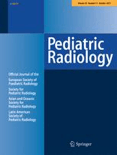
PEDIATRIC RADIOLOGY
Scope & Guideline
Empowering clinicians through cutting-edge research.
Introduction
Aims and Scopes
- Pediatric Imaging Techniques and Technologies:
The journal covers various imaging modalities, including MRI, CT, ultrasound, and PET, with a focus on their application in pediatric populations. It aims to highlight advancements and innovations in imaging technology that enhance diagnostic capabilities. - Clinical Applications in Pediatric Radiology:
Research articles focus on the clinical implications of imaging findings, exploring how radiological assessments influence management and treatment decisions in pediatric patients. This includes the evaluation of common conditions such as trauma, infections, and congenital abnormalities. - Radiological Safety and Patient Care:
A significant emphasis is placed on radiation safety, particularly in the context of pediatric patients who are more sensitive to radiation exposure. The journal discusses strategies for minimizing radiation doses and optimizing imaging protocols to ensure patient safety. - Interdisciplinary Collaboration:
The journal encourages collaboration between radiologists and other medical professionals, including pediatricians and surgeons, to improve patient outcomes through integrated care approaches. - Emerging Trends and Research in Pediatric Radiology:
The journal features articles on emerging trends in pediatric radiology, including the use of artificial intelligence, machine learning, and other advanced technologies to enhance diagnostic accuracy and efficiency.
Trending and Emerging
- Artificial Intelligence and Machine Learning:
There is an increasing focus on the application of artificial intelligence (AI) and machine learning in pediatric radiology, with studies exploring how these technologies can enhance diagnostic accuracy, streamline workflows, and reduce human error. - Multimodal Imaging Approaches:
Emerging research emphasizes multimodal imaging techniques that combine different imaging modalities (e.g., MRI and CT) to provide comprehensive assessments of pediatric conditions, particularly in complex cases. - Patient-Centered Imaging Protocols:
A trend towards developing imaging protocols that prioritize patient comfort and safety is evident. This includes non-sedated imaging techniques and the use of advanced technologies that minimize the need for sedation in young patients. - Radiological Interventions:
There is a growing interest in interventional radiology within the pediatric population, with studies focusing on minimally invasive procedures and their impact on patient outcomes. - Diversity and Inclusion in Pediatric Radiology:
The journal is increasingly addressing issues of diversity and inclusion within pediatric radiology, focusing on representation in research, education, and clinical practice to better serve diverse patient populations.
Declining or Waning
- Traditional Imaging Modalities:
There has been a noticeable decrease in publications focused solely on traditional imaging modalities like plain radiography. As more advanced techniques such as MRI and CT become prevalent, the reliance on basic X-rays for diagnosis appears to be waning. - Static Reporting Standards:
The journal has shifted away from static reporting standards in favor of more dynamic, structured reporting systems that adapt to the evolving landscape of pediatric radiology. This reflects a move toward more personalized and patient-centered reporting. - Generalized Pediatric Conditions:
Research focusing on generalized pediatric conditions without specific imaging correlations has declined. The journal now prioritizes studies that link imaging findings directly to clinical outcomes, emphasizing the value of imaging in targeted conditions. - Historical Reviews:
Interest in historical reviews of pediatric radiology practices has diminished as the field rapidly advances. The focus has shifted towards current practices, innovations, and future directions rather than retrospectives.
Similar Journals

Journal of the Belgian Society of Radiology
Empowering Radiologists with Open Access InsightsThe Journal of the Belgian Society of Radiology, published by UBIQUITY PRESS LTD, is a pivotal resource in the field of radiology, nuclear medicine, and imaging. With an ISSN of 2514-8281 and E-ISSN of 2514-8281, this open access journal has been dedicated to fostering the dissemination of high-quality research since its establishment in 2010. Distributed from the United Kingdom, it offers a platform for innovative studies, case reports, and reviews that contribute to the advancement of radiological sciences. Despite its current Q4 category ranking within Scopus, the journal plays a critical role in sharing essential findings with a community of over 1,200 professionals and students eager to stay abreast of emerging trends and technological advancements in imaging. By enabling unrestricted access to its publications, the journal encourages collaborative research and knowledge exchange that transcends geographic boundaries, solidifying its importance for both established researchers and emerging scholars in the discipline.

EUROPEAN RADIOLOGY
Shaping the Future of Medical ImagingEUROPEAN RADIOLOGY, published by SPRINGER, stands as a prestigious international journal in the field of radiology, nuclear medicine, and imaging, with an impressive impact factor that underscores its significance among peers. With an ISSN of 0938-7994 and an E-ISSN of 1432-1084, this journal provides a platform for cutting-edge research and advancements in medical imaging from 1991 to 2024. Recognized as a Q1 journal in both general Medicine and the specialized Radiology category by 2023, EUROPEAN RADIOLOGY ranks an impressive #17 out of 333 in its field according to Scopus, placing it in the 95th percentile. While it does not currently offer Open Access options, the journal remains essential reading for researchers, professionals, and students striving to stay at the forefront of developments in diagnostic imaging and related technologies. By contributing to a comprehensive understanding of radiological practices, EUROPEAN RADIOLOGY plays a crucial role in shaping the future of medical diagnosis and patient care.

EUROPEAN JOURNAL OF RADIOLOGY
Advancing Imaging Excellence in HealthcareThe European Journal of Radiology, published by Elsevier Ireland Ltd, is a premier peer-reviewed journal in the fields of radiology, nuclear medicine, and imaging. Established in 1981, it has carved a significant niche within the academic community, showcasing innovative research that enhances medical imaging practices and improves patient care. With an impressive ranking in the Q1 category for both Medicine (miscellaneous) and Radiology, Nuclear Medicine, and Imaging in 2023, the journal is recognized globally for its commitment to advancing scientific knowledge and improving imaging methodologies. The journal's Scopus ranking of #60/333, placing it in the 82nd percentile, underlines its reputation for high-quality research and scholarly contributions. While traditionally a subscription-based journal, it continually evolves to meet the demands of the academic landscape, aiming to bridge the gap between research and clinical practice. Researchers, healthcare professionals, and students alike can benefit from exploring its extensive archives and current publications, which are curated to foster education and innovation in the medical imaging domain.

Japanese Journal of Radiology
Connecting Researchers and Practitioners in RadiologyThe Japanese Journal of Radiology, published by SPRINGER, serves as a premier platform for disseminating cutting-edge research and clinical advancements in the fields of radiology, nuclear medicine, and imaging. With an ISSN of 1867-1071 and E-ISSN 1867-108X, this journal has established itself as a vital resource for practitioners, researchers, and students alike. Renowned for its high-quality peer-reviewed articles, it currently enjoys a respectable impact factor within the Q2 category of Scopus rankings, placing it in the 69th percentile among 333 journals in its field. The journal has seen consistent convergence of research from 2009 to 2024, further underscoring its commitment to advancing the understanding of radiological practices. Importantly, the journal offers Open Access options to facilitate widespread dissemination of knowledge, ensuring that vital research reaches its audience without barriers. Addressed in Japan, the Japanese Journal of Radiology plays a critical role in enhancing the global discourse on medical imaging, making it an essential resource for anyone engaged in this dynamic field.

Egyptian Journal of Radiology and Nuclear Medicine
Bridging Research and Practice in RadiologyThe Egyptian Journal of Radiology and Nuclear Medicine, published by Springer, is a premier open access journal that has provided valuable insights and advancements in the fields of radiology and nuclear medicine since its initiation in 2010. With an E-ISSN of 2090-4762, this journal is dedicated to bridging the gap between research and clinical practice, allowing for the dissemination of high-quality research to a global audience. Situated in Germany, it enjoys a robust reputation in the academic community, evidenced by its categorization in the Q3 quartile for 2023, as well as its Scopus ranking, where it holds a position of #225 out of 333 in the domain of Radiology, Nuclear Medicine and Imaging, placing it in the 32nd percentile. The journal's open access model ensures that researchers, professionals, and students can freely access innovative studies, reviews, and case reports that discuss the latest methodologies, technological advancements, and clinical outcomes in radiology and nuclear medicine. As it looks toward its converged years spanning from 2010 to 2024, the Egyptian Journal of Radiology and Nuclear Medicine continues to be an essential resource for advancing knowledge and fostering ongoing collaboration in these critical fields.
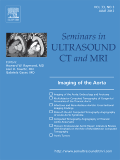
SEMINARS IN ULTRASOUND CT AND MRI
Innovating Insights in Ultrasound, CT, and MRISEMINARS IN ULTRASOUND CT AND MRI is a prestigious academic journal dedicated to advancing the fields of radiology, nuclear medicine, and imaging. Published by W B SAUNDERS CO-ELSEVIER INC, this journal has been a cornerstone of scholarly communication since 1984, providing a platform for high-quality research and review articles that enhance the understanding of diagnostic imaging techniques. With a current impact factor reflected in its Q3 quartile ranking among 333 journals in its category, it remains a valuable resource for researchers and clinicians alike. The journal's focus includes but is not limited to innovations in ultrasound, computed tomography, and magnetic resonance imaging, making it essential for professionals looking to stay at the forefront of imaging science. While it operates under a subscription model, its extensive archive of influential articles ensures ongoing access to critical knowledge and developments in the field. With a commitment to quality and relevance, SEMINARS IN ULTRASOUND CT AND MRI continues to contribute significantly to the evolving landscape of medical imaging.

Acta Radiologica Open
Exploring the forefront of clinical advancements in radiology.Acta Radiologica Open is an esteemed open-access journal published by SAGE Publications Ltd, dedicated to advancing the field of radiology. Since its inception in 2012, the journal has been a vital platform for researchers, professionals, and students to disseminate and access high-quality, peer-reviewed research in radiological science. With a focus on innovative imaging techniques, clinical advancements, and interdisciplinary approaches, Acta Radiologica Open plays a crucial role in bridging the gap between theoretical knowledge and practical application. The journal contributes significantly to the body of literature by promoting open science and facilitating global collaboration among researchers. Readers can readily access a diverse range of articles that not only highlight emerging trends but also address key challenges in the field, making it an indispensable resource for anyone involved in radiological research and practice.
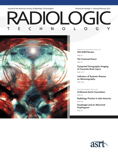
Radiologic Technology
Innovating the Future of Medical ImagingRadiologic Technology, published by the American Society of Radiologic Technologists, serves as a pillar in the fields of radiology, nuclear medicine, and imaging, providing critical insights and advancements that shape the practice and profession. With an ISSN of 0033-8397 and E-ISSN 1943-5657, this esteemed journal has been contributing to the scholarly literature since 1963 and continues its commitment to quality research well into 2024. Although it is not an open-access journal, Radiologic Technology is recognized for its robust contributions, holding a Q3 quartile ranking in both "Radiological and Ultrasound Technology" and "Radiology, Nuclear Medicine, and Imaging," according to the latest 2023 category quartiles. Its Scopus rankings highlight its standing within the field, offering thought-provoking articles that encourage further exploration and innovation. As the landscape of medical imaging evolves, this journal remains a crucial resource for researchers, practitioners, and students aiming to enhance their understanding of radiologic technologies and their applications in modern healthcare.
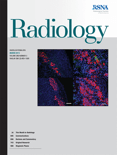
RADIOLOGY
Elevating diagnostic excellence through innovative research.RADIOLOGY, published by the Radiological Society of North America (RSNA), stands as a premier journal in the fields of radiology, nuclear medicine, and imaging. Established in 1945, this esteemed journal has consistently provided groundbreaking research and insights, helping to shape advancements in diagnostic imaging and therapeutic interventions. With a commendable Q1 ranking in its category and a remarkable 99th percentile ranking in Scopus, RADIOLOGY continues to be a pivotal resource for clinicians, researchers, and students alike. Although not an Open Access journal, it offers a wealth of high-quality peer-reviewed articles that contribute significantly to the ongoing discourse in the medical community. With a strong focus on innovative techniques and the integration of new technologies, RADIOLOGY remains essential for professionals aiming to stay at the forefront of medical imaging practices.
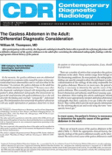
Contemporary Diagnostic Radiology
Advancing the Frontiers of Medical ImagingContemporary Diagnostic Radiology is a pivotal journal in the field of medical imaging and radiology, published by Lippincott Williams & Wilkins. With an ISSN of 0149-9009 and an E-ISSN of 1938-1395, this journal serves as an essential platform for disseminating high-quality research and advances in diagnostic radiology and related disciplines. While it is categorized in the lower quartiles (Q4) for its performance in the 2023 rankings in both Neurology, Radiology, Nuclear Medicine and Imaging, and Surgery, its focus on emerging technologies and methodologies in imaging continues to provide valuable insights for practitioners and researchers alike. The journal’s scope includes innovative diagnostic tools, imaging techniques, and case studies, fostering collaboration and knowledge sharing in the medical community. Although it does not offer open access options, its commitment to contributing to the ongoing dialogue in clinical imaging is undisputed, making it an essential resource for professionals seeking to stay abreast of current trends and research in the rapidly evolving landscape of diagnostic radiology.